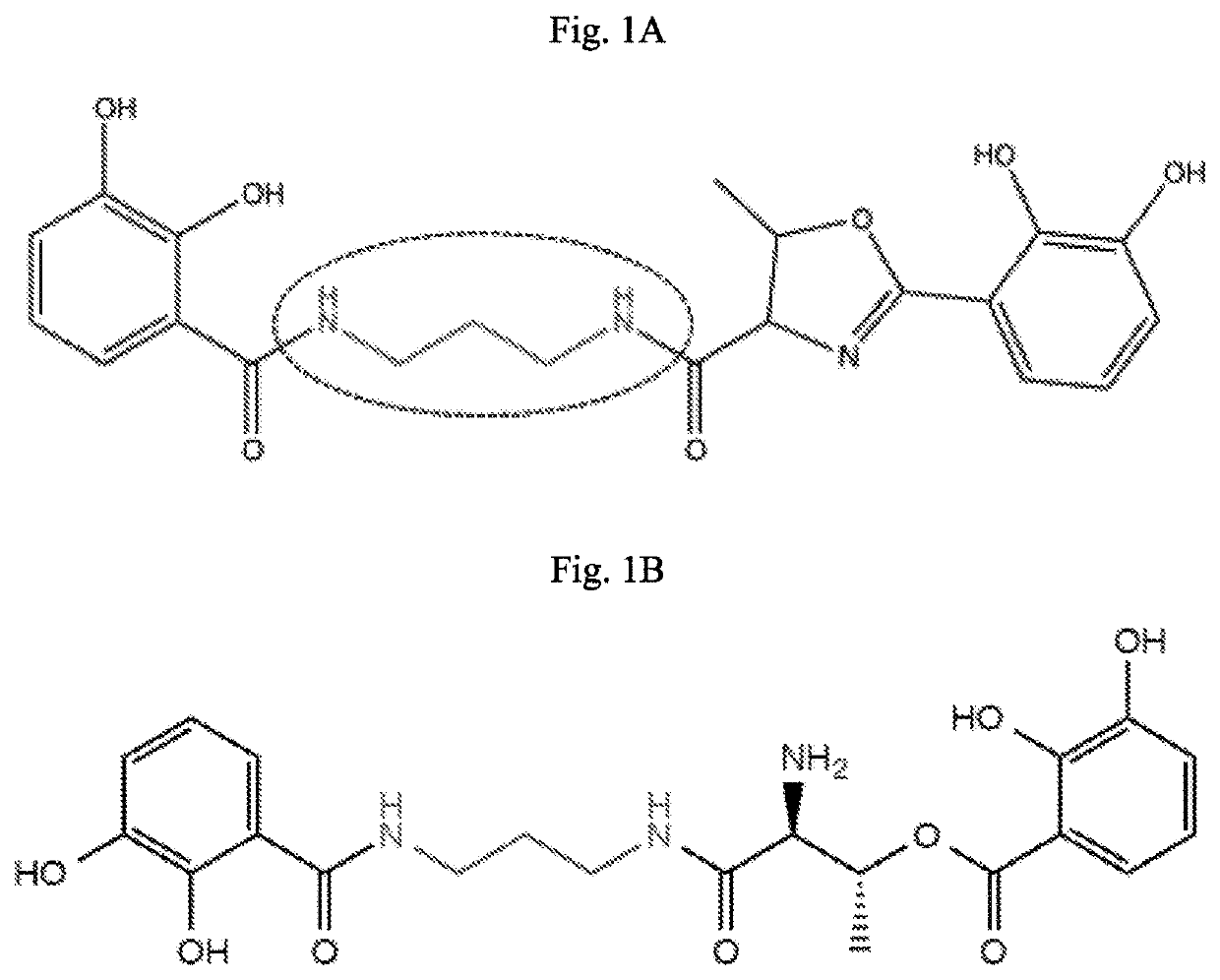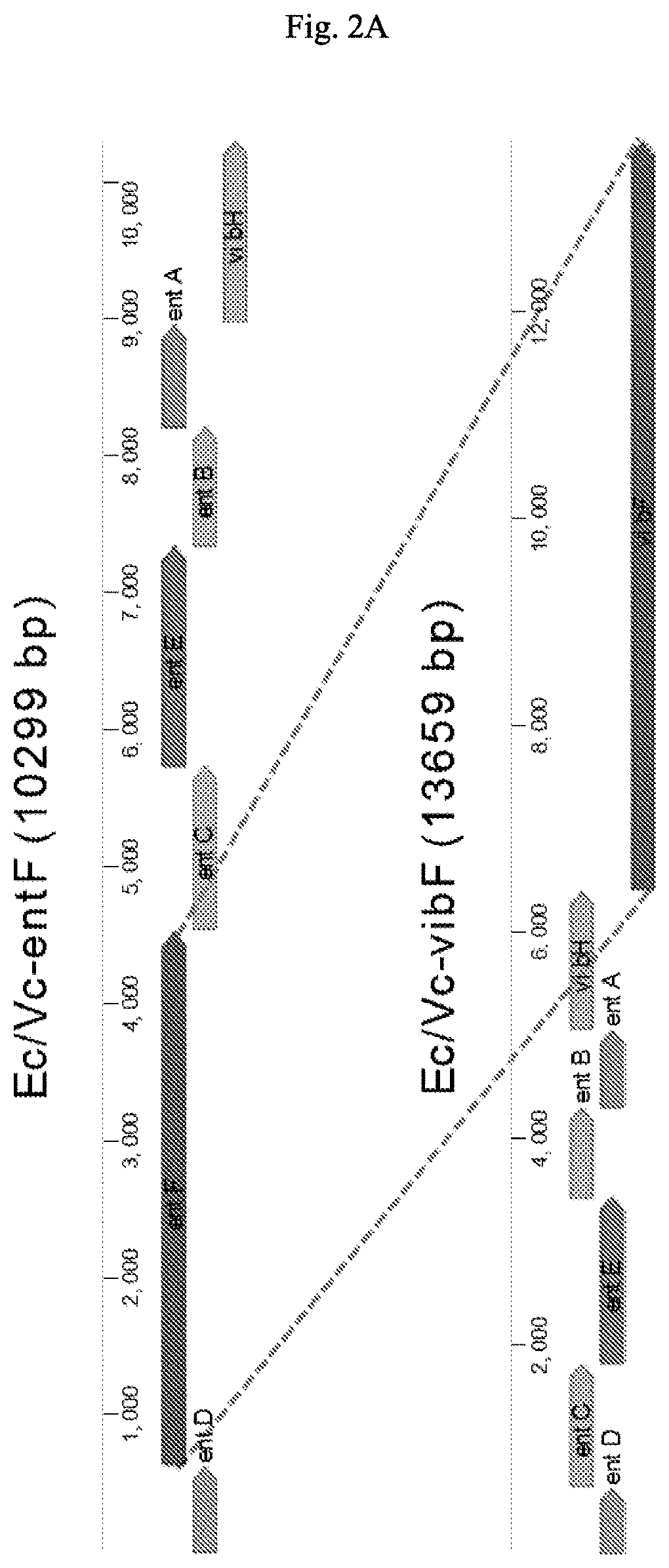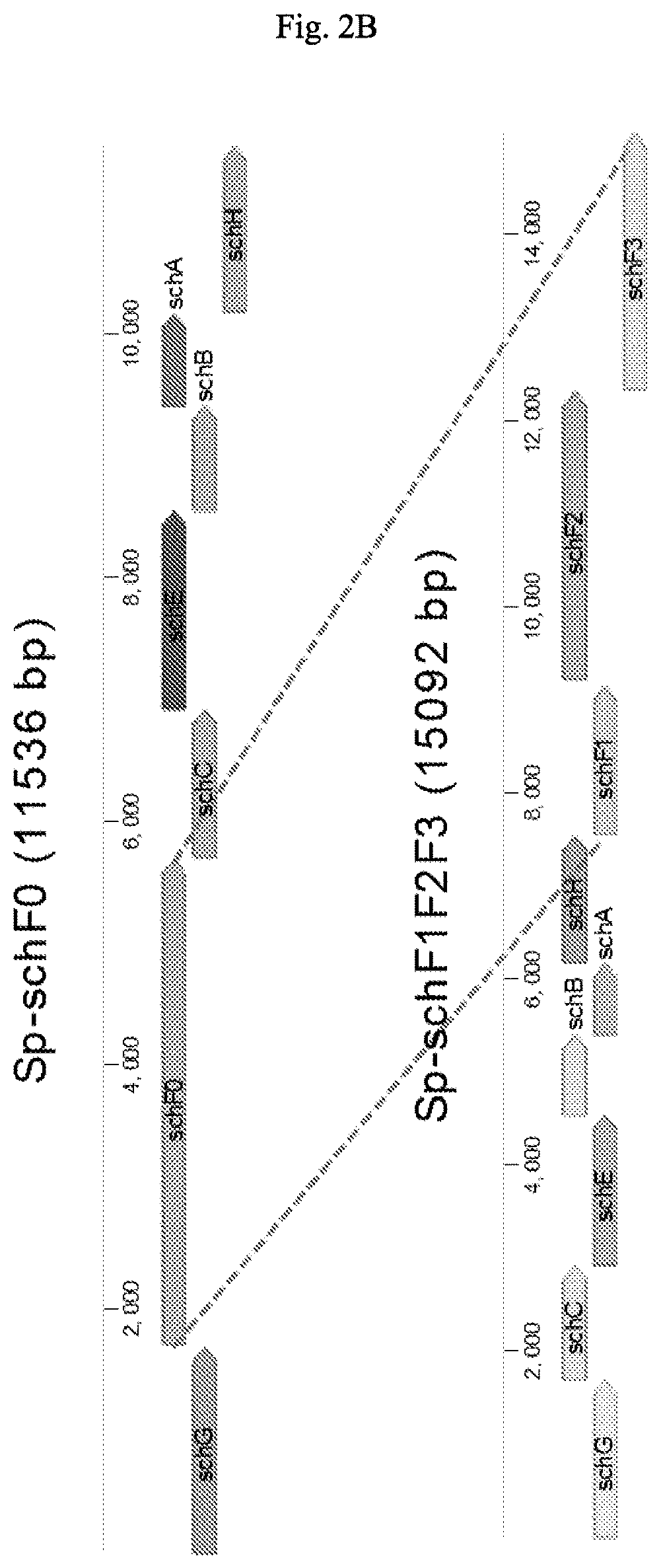Compressed pathways for nonribosomal molecular biosynthesis
a non-ribosomal molecular biosynthesis and pathway technology, applied in the field of biotechnology, can solve the problems of increasing the difficulty of finding new molecules and the difficulty of expanding the chemical diversity of libraries to include new entities
- Summary
- Abstract
- Description
- Claims
- Application Information
AI Technical Summary
Benefits of technology
Problems solved by technology
Method used
Image
Examples
example 1
[0113]The present study directed to the production of new molecules based on, but structurally and functionally distinct from, dihydroxybenzoate. This was achieved, ultimately, by providing VibH with different substrates (e.g., polyamine linkers) to condense dihydroxybenzoate (FIG. 1, circled). The polyamine linkers were selected based on the availability of at least two amines groups with one or two hydrogen atoms (see examples in Table 2, “precursors”).
[0114]Four different constructs, each containing a “compressed pathway,” were prepared for the initial biosynthesis of dihydroxybenzoate (FIGS. 2A-2B). These biosynthetic genes were amplified by PCR using 5′-3′ primers that added the E. coli ribosomal binding site GAGGAGA to the region upstream of the translation initiation codon, when required. Genes schCEBA were amplified together having a ribosomal binding site (RBS) been only added upstream of schC. The native RBSs, when existent, were maintained for schEBA (in some cases the ge...
example 2
[0121]Serratiochelins are catechol siderophores produced by Serratia plymuthica V4. These siderophores utilize catechol moieties for iron coordination, obtaining them from the conversion of endogenous chorismate to dihydroxybenzoate (DHB). This pathway appears to be extremely conserved among catechol siderophores. Additional enzymes can then use this precursor to form a wide diversity of catechol-based molecules, such as enterobactin, fluvibactin, vibriobactin, photobactin, petrobactin and vulnibactin.
[0122]The experiments described in this example address whether E. coli is capable of producing enterobactin as well as serratiochelins by testing (1) whether the machinery responsible for the import and export of siderophores in E. coli would recognize serratiochelins and its catechol moieties; (2) whether E. coli can uptake polyamines (Table 3), (3) whether S. plymuthica genes would be functional in E. coli (Table 4), and (4) whether expressing the DHB pathway proteins in a different...
example 3
[0127]As noted above, the biosynthetic pathway in Example 1 includes genes homologous to E. coli and V. cholerae genes. In E. coli and V. cholerae, these homologs form part of the biosynthetic pathways that produce enterobactin and vibriobactin, respectively. The following experiments tested whether these genes could replace the S. plymuthica homologs to produce serratiochelins. Thus, an additional pathway was constructed for the biosynthesis of serratiochelins and new analogs.
[0128]E. coli genes entABCDE and V. cholerae gene vibFH, ancestral homologs to S. plymuthica V4 genes, were cloned into the same empty plasmid backbone, the plasmid was introduced into E. coli Ent, and the resulting construct was designated pEV_S (FIG. 4B, bottom). Holo-EntB, acylated with DHB by EntE, serves as a substrate for the activity of VibH, similarly to VibB. pEV_S enabled the growth of E. coli Ent-under iron-limited conditions in the presence of diaminopropane. The production of both a serratiochelin...
PUM
| Property | Measurement | Unit |
|---|---|---|
| pH | aaaaa | aaaaa |
| chemical diversity | aaaaa | aaaaa |
| chemical structure | aaaaa | aaaaa |
Abstract
Description
Claims
Application Information
 Login to View More
Login to View More - R&D
- Intellectual Property
- Life Sciences
- Materials
- Tech Scout
- Unparalleled Data Quality
- Higher Quality Content
- 60% Fewer Hallucinations
Browse by: Latest US Patents, China's latest patents, Technical Efficacy Thesaurus, Application Domain, Technology Topic, Popular Technical Reports.
© 2025 PatSnap. All rights reserved.Legal|Privacy policy|Modern Slavery Act Transparency Statement|Sitemap|About US| Contact US: help@patsnap.com



